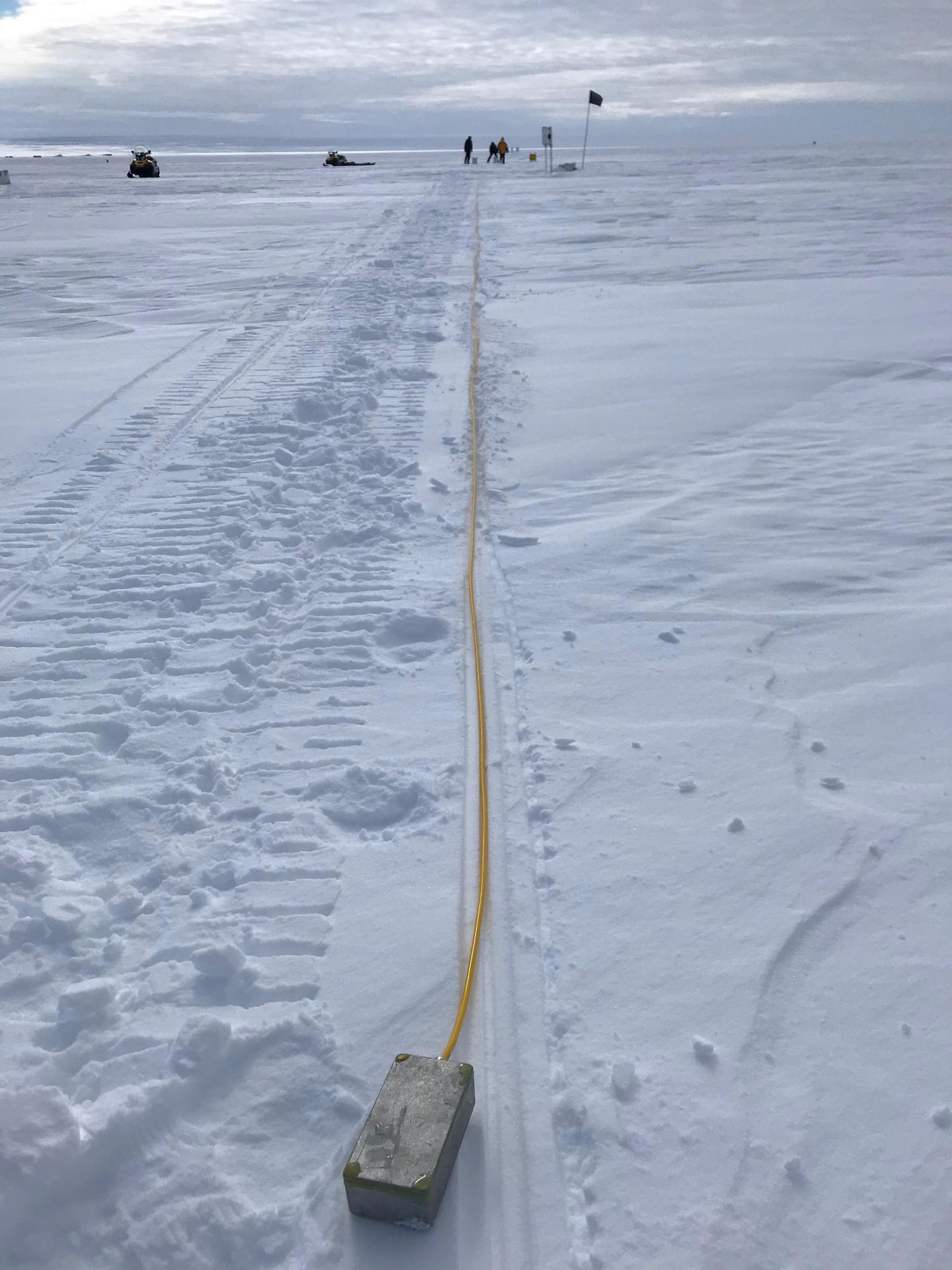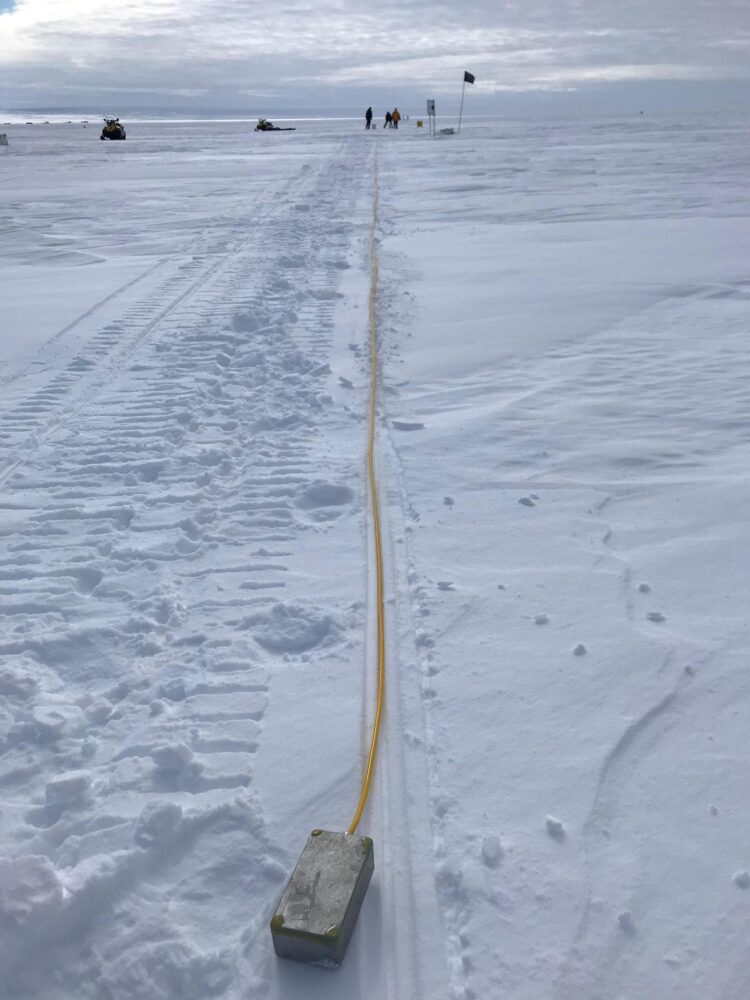
Credit: Michael Kendall/ University of Oxford
At the Seismological Society of America’s 2021 Annual Meeting, researchers shared how they are using fiber optic cable to detect the small earthquakes that occur in ice in Antarctica.
The results could be used to better understand the movement and deformation of the ice under changing climate conditions, as well as improve future monitoring of carbon capture and storage projects, said Anna Stork, a geophysicist at Silixa Ltd.
Stork discussed how she and her colleagues are refining their methods of distributed acoustic sensing, or DAS, for microseismicity–earthquakes too small to be felt. DAS works by using the tiny internal flaws within an optical fiber as thousands of seismic sensors. An instrument at one end sends laser pulses down the cable and measures the “echo” of each pulse as it is reflected off the fiber’s internal flaws.
When the fiber is disturbed by earthquakes or icequakes, there are changes in the size, frequency and phase of laser light scattered back to the DAS receiver that can be used characterize the seismic event.
Michael Kendall of the University of Oxford said the Antarctic research demonstrates how DAS can be used to monitor underground carbon capture and storage at other sites in the world. For instance, the layout of the Antarctic network offers a good example for how a similar network could be configured to best detect microseismicity that could be triggered by carbon storage.
“Our work also demonstrates a method of using DAS fiber arrays to investigate microseismic earthquake source mechanisms in more detail than conventional geophones,” said Tom Hudson of the University of Oxford. “If we can analyze the source mechanism–how an earthquake fails or fractures–then we may be able to attribute the earthquake to the movement of fluids like carbon dioxide in a reservoir.”
The Antarctic microseismic icequakes recorded by DAS “are approximately magnitude -1, corresponding to approximately the size of a book falling off a table,” Hudson explained, “so they are very small earthquakes.”
The study by Hudson and colleagues is the first to use DAS to look at icequakes in Antarctica. The fiber optic cable was deployed in a linear and triangular configuration on the ice surface at the Rutford Ice Stream.
Kendall said there are a number of challenges to using fiber optic sensors in the harsh Antarctica environment. The equipment had to travel in pieces by boat and several planes to the study site. The researchers had to bury the fiber to reduce wind noise contaminating the seismic signal, as well as remove the signal of a generator that powered the DAS instrument.
“We housed the instrument in a mountaineering tent, which basically served as a tiny office,” Stork explained. “Keeping temperatures within the recommended operating limits was a challenge. The radiative heating from the sun warned the tent to well in the 30s [degrees Celsius], even though it was -10 degrees Celsius outside.”
The researchers share their analyses of icequake data with climatologists and other researchers studying the slip of glaciers and other ice movements in Antarctica, Kendall said.
“Hopefully in the future we will interact more with scientists drilling ice cores too, as they use fiber as distributed temperature sensors, but these fibers that they put down boreholes could also be used for seismic studies like ours,” he noted.
###
Media Contact
Becky Ham
[email protected]





